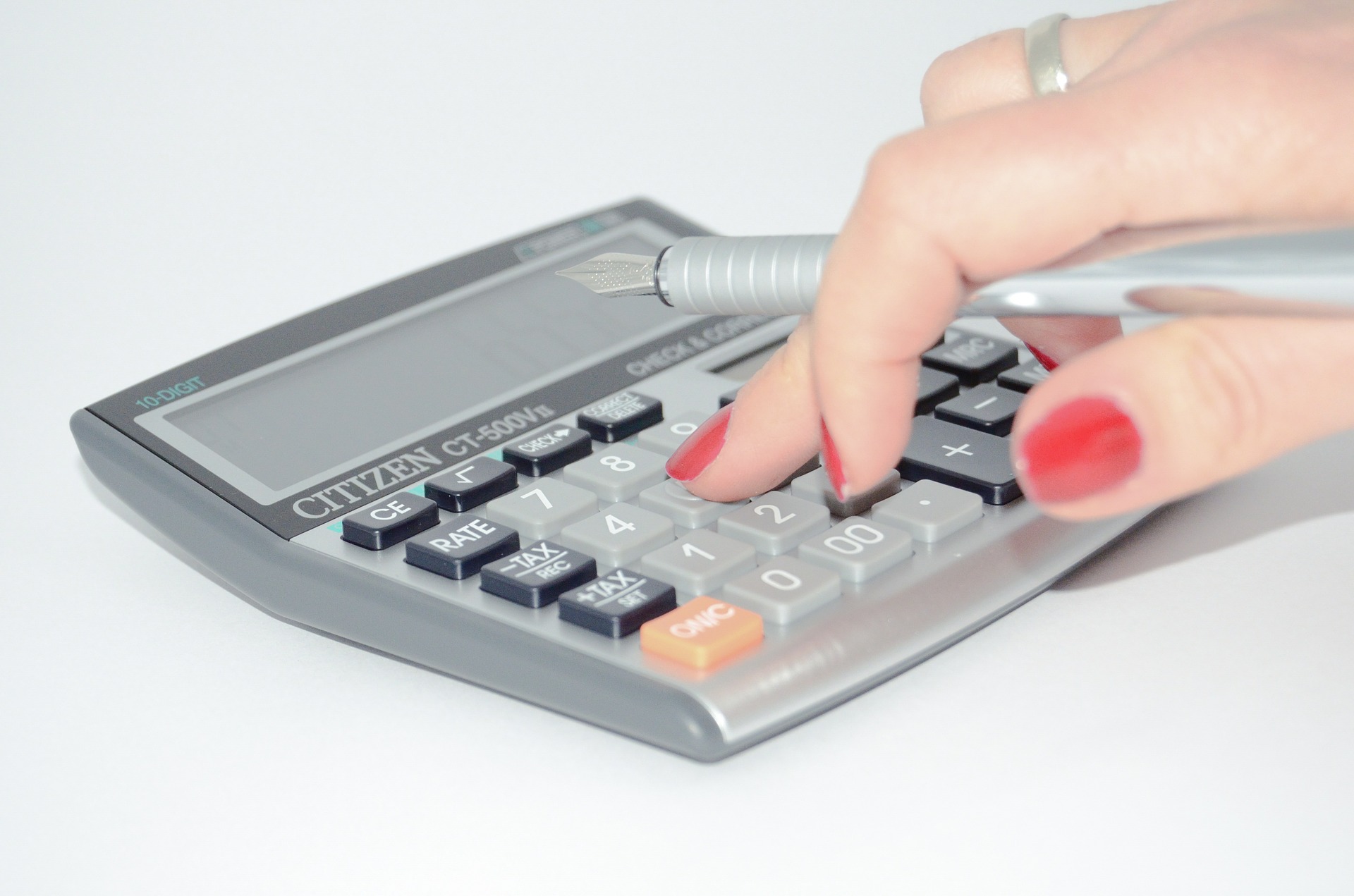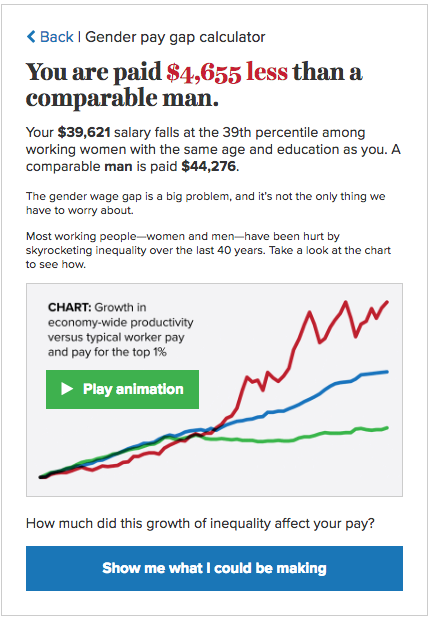This Simple Calculator Shows How Much You Benefit (or Suffer) From the Gender Wage Gap

By:
The gender wage gap, while widely recognized, can feel somewhat intangible. The Economic Policy Institute has created a calculator that crunches the numbers for you.
 Pixabay - pixabay.com
Pixabay - pixabay.com
The calculator was released in October with the EPI report titled “What is the gender pay gap and is it real?” (Spoiler: it is.)
If you're a woman, after you input your age, gender, yearly salary and whether or not you have a bachelors' degree, the calculator produces a message revealing how much more you would likely make if you were male. If you are male, it tells you how much more you likely make than "a comparable woman." The gap is present even among new college graduates, the EPI reports. (If you're curious about their methodology, the EPI breaks it down in the endnotes of the report.)
Here's what happens when you calculate how the pay gap impacts a 25-year-old woman making $39,621 — the average American woman's salary in 2014, according to the Women's Institute for Policy Research.
 EPI.org - epi.org
EPI.org - epi.org
“The gender wage gap is sizeable no matter how it’s measured,” EPI senior economist Elise Gould comments in a press release on the report. “And despite attempts by some analysts, it can’t be explained away with creative number crunching. The gender wage gap is ingrained in our economy and it cannot be solved by simply asking women to make different choices with regard to their education, occupation, work schedules, or family life.”
Race also impacts your paycheck.
"In 2015, average hourly wages for black and Hispanic men were $15 and $14, respectively, compared with $21 for white men. Only the hourly earnings of Asian men ($24) outpaced those of white men.
"Among women across all races and ethnicities, hourly earnings lag behind those of white men and men in their own racial or ethnic group. But the hourly earnings of Asian and white women ($18 and $17, respectively) are higher than those of black and Hispanic women ($13 and $12, respectively) – and also higher than those of black and Hispanic men."
Women of color who want full-time jobs are also disproportionately employed part time, according to the EPI report. As the authors note, education doesn't eliminate the pay gap, with advanced degree-holding women still earning less than their average college educated male counterparts.
You can try it for yourself on the EPI.
